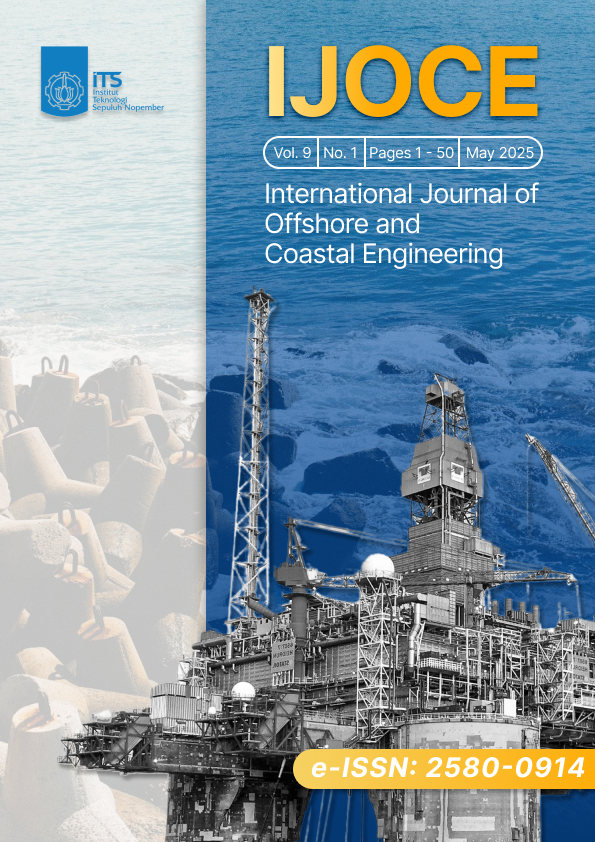Lazy Wave Flexible Riser Dynamic Tension Analysis with Variation of Diameter and Buoyancy Module Configuration in Extreme Condition
DOI:
https://doi.org/10.12962//j225800914.v9i1.4502Keywords:
Flexible Riser, Lazy Wave, Maximum Tension, Minimum Bending radiusAbstract
ABSTRACT
Oil and Gas Production at floating offshore facilities is growing.
It prompted the design of the Flexible Riser as a solution to channel
exploration results to floating offshore facilities. In this final
project, dynamic stress analysis of lazy wave flexible riser is
carried out with variations in diameter and number of buoyancy
modules under extreme conditions. This study discusses the
maximum tension and minimum bending radius (MBR) on the
flexible riser due to variations in diameter and number of buoyancy
modules in extreme conditions with two system conditions, namely
intact conditions and damage conditions. From the results of the
analysis, the larger the diameter of the flexible riser, the greater
the maximum tension at the SPM point. While it will be smaller at
the PLEM point and the more buoyancy modules used, the smaller
the maximum tension at the SPM point, the larger it will be at the
PLEM point. The larger the diameter of the flexible riser, the
smaller the MBR in the SagBend area. The larger the HogBend
area and the more buoyancy modules used, the larger the MBR in
the SagBend area, while the smaller the HogBend area.
Downloads
Downloads
Published
How to Cite
Issue
Section
License
Copyright (c) 2025 International Journal of Offshore and Coastal Engineering (IJOCE)

This work is licensed under a Creative Commons Attribution 4.0 International License.








